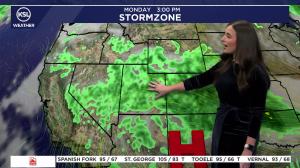Estimated read time: 3-4 minutes
- Controlled releases from Utah Lake to the Great Salt Lake have resumed.
- The Central Utah Water Conservancy District plans to send 70,000 acre-feet of water to the Great Salt Lake.
- This measure aims to prevent flooding and support the Great Salt Lake's water levels.
Editor's note: This article is published through the Great Salt Lake Collaborative, a solutions journalism initiative that partners news, education and media organizations to help inform people about the plight of the Great Salt Lake.
OREM — Utah Lake is poised to deliver another boost to its northern neighbor this year.
Central Utah Water Conservancy District officials announced Wednesday that they plan to send 500 million gallons of water daily into the Jordan River and toward the Great Salt Lake via a Utah Lake control gate by the Point of the Mountain.
A spokesperson for the district clarified that releases began last week. In all, the agency expects to send about 70,000 acre-feet of water — almost enough water to completely fill Echo Reservoir — over "the next few weeks," depending on snowmelt forecasts.
It marks the second straight year that it will conduct releases from Utah Lake to combat flooding concerns while also helping out the struggling Great Salt Lake.
"Our job is to always have an eye on where water is now and where it needs to be. This is a way for us to be proactive for the spring runoff and do all we can to ensure water levels in Utah Lake and Great Salt Lake are healthy," said Gene Shawcroft, the district's general manager, in a statement.
The agency conducted a similar measure last year as Utah Lake reached its "compromise level" for the first time since 2011. Jordan Valley Water Conservancy officials completed a smaller release later in 2024, but only from water conserved within its district.
The lake is currently 96% full, which is just slightly lower than where it was this time last year but almost 20 percentage points above its median capacity average for February, according to Utah Division of Water Resources data.
It's also set to receive a boost from this year's snowpack.
While regions and sites all across the state have received varying results this winter, the Provo-Utah Lake-Jordan snowpack basin's total so far was listed at 110% of its median average for late February on Wednesday. Its running total is also 81% of its median peak average with 42 days left before the average peak in April, per Natural Resources Conservation Service data.
In layman's terms, controlled releases are needed to avoid likely flooding once mountain snow melts and its water reaches the lake.
That's where the Great Salt Lake's capacity needs help. Its southern arm, which receives inflows from the Jordan River, entered Wednesday at 4,193.1 feet elevation, about 5 feet below its minimum healthy level. Researchers say the lake likely needs an additional 770,000 acre-feet of water every year from its baseline average for it to regularly maintain a "healthy" level by 2054.
In a statement, state engineer Teresa Wilhelmsen said the planned releases are an example of the "good communication" needed to manage Utah water resources, especially when a measure can solve two different problems.
"It's smart when water districts work with the state to make these determinations," she said. "This proactive regulatory release will enhance this system and help to reduce the potential for flooding as we move the water downstream."
Residents along the Jordan River may notice high levels again over the next few weeks, as was the case last year.
Meanwhile, the Great Salt Lake could also receive additional boosts from other controlled releases across its basin over the next few months. The conservation service notes that the lake's basin snowpack remains at 105% of its median average for this point in the year. Many of the reservoirs across the basin are already near or above 80% capacity before the upcoming snowmelt.









